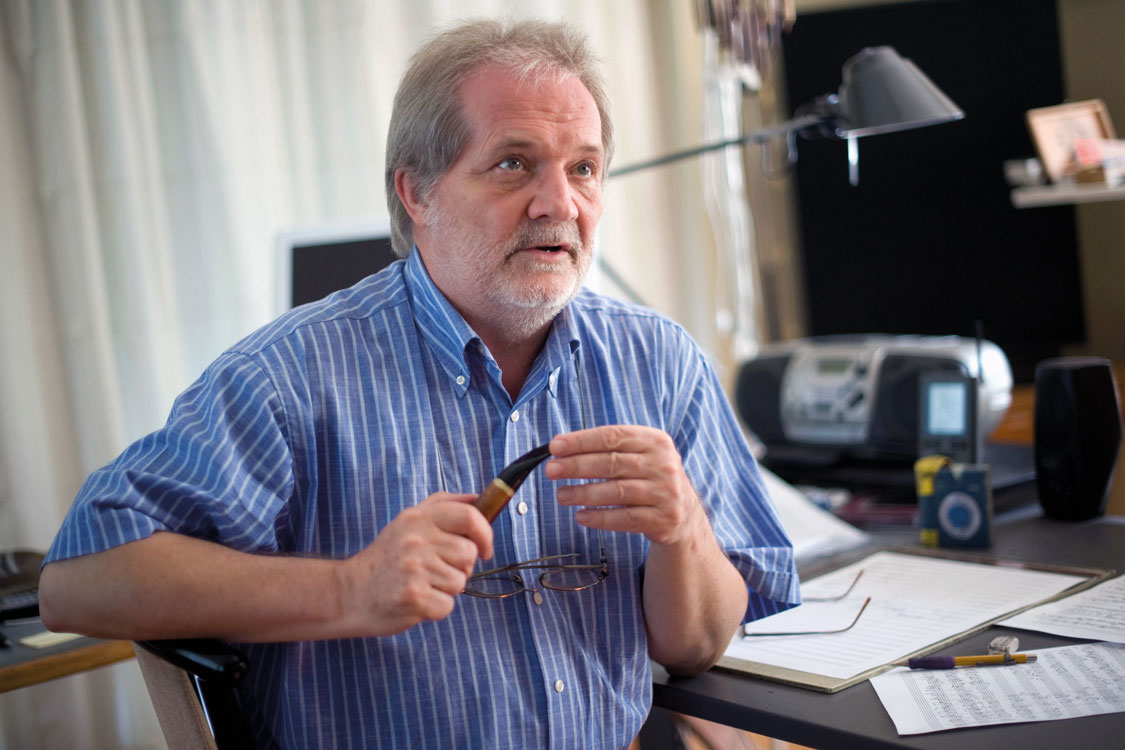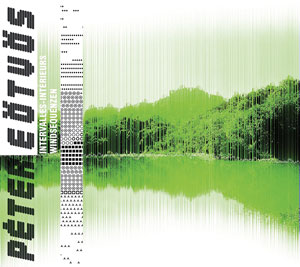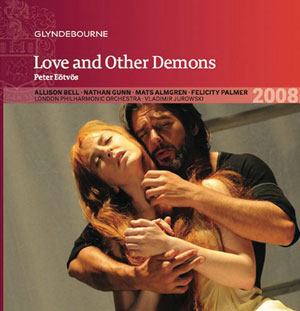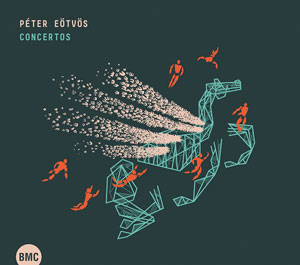Contemporary composer: Peter Eötvös
Arnold Whittall
Monday, March 25, 2024
The Hungarian composer’s works, rooted in contemporary social issues, combine tradition and innovation, writes Arnold Whittall
The composer Peter Eötvös died at the age of 80 on March 24. As a tribute we are republishing below a fascinating overview of his life and work by Arnold Whittall, which originally appeared in the February 2017 issue of Gramophone...

Bartók (b1881) and Kodály (b1882); Ligeti (b1923) and György Kurtág (b1926): on that basis, tidy-minded music historians might have confidently predicted that the next pair of internationally celebrated Hungarian composers would be born during the 1960s, coming to prominence in the 1990s. Instead, the turn of the millennium saw no obvious challenges to the still-active dominance of Ligeti and Kurtág – and understandably so, given the resourcefulness of their distinctive versions of a ‘late’ modernism whose roots in composers such as Bartók and Berg had proved remarkably productive. In 2001, the second edition of The New Grove Dictionary of Music and Musicians dutifully identified in its ‘Hungary’ entry ‘the generation that became established in the 1970s’, and was moving closer ‘to both the older and newer avant-garde trends’; within this group we find the name of Peter Eötvös.
Eötvös was born in 1944, and until the 1990s he was best known internationally as a conductor specialising in the music of such challenging composers as Stockhausen, Boulez and Birtwistle. From his Kodály-encouraged student years in Hungary he had combined conducting with composition, but a move to Germany in the late 1960s brought contact with Stockhausen. The electronic studio at West German Radio was supporting the evolution of Stockhausen’s most radical compositions, and Eötvös’s involvement in Stockhausen’s ensemble as technician and performer (1968-76) placed him at the creative heart of mid-century European modernism, in Germany and in France.
He was Boulez’s choice as conductor of the inaugural concert at IRCAM (1978), and was the first music director of the Ensemble Intercontemporain (1979-91). His busy schedule included three years as principal guest conductor of the BBC SO (1985-88), while all the time his profile as a composer was gaining strength. It was perhaps the contrast between his early Budapest years at the Comedy Theatre, providing music for films and plays, and his later experiences with Stockhausen’s theatrical enterprises (culminating in two of the Licht operas in the 1980s) that clarified Eötvös’s commitment to the kind of musico-dramatic rituals that have occupied much of his time as a composer – rituals, and themes, that (unlike Stockhausen’s, or Ligeti’s) have a strongly ‘mainstream’ aspect to them, especially when as deeply rooted in contemporary social issues as in his operatic version of Tony Kushner’s play about Aids, Angels in America (2002-04). It is clear from his early compositions that his Hungarian roots, and admiration for Bartók, are by no means irrelevant, and they remain relevant today – in some ways more relevant than the kind of uncompromisingly radical concerns that might be extrapolated from his work as a performer of other composers’ music during the 1970s and 1980s.
The scene on CD is usefully set by Kosmos (or Cosmos), a 15-minute work ‘for one or two pianos’, written in three days at the age of 17 in 1961, which is representative of his aesthetic pragmatism in expressing both respect for tradition (Bartók is quoted) and commitment to innovation. The point about ‘one or two pianos’ is that the piece can be played on two pianos by two pianists who shift out of phase, coinciding precisely in just two places. The youthful composer called it Kosmos in homage to Yuri Gagarin’s pioneering space flight, and although this might appear to lay foundations for a Stockhausen-like obsession with an ultramodern version of ‘the music of the spheres’, Eötvös has consistently distanced himself from such far-reaching cosmological themes, giving his musical rituals a more immediately human face.
Before exploring this human dimension in his operas, he produced ambitious works such as Intervalles-intérieurs (1974, rev 1981) for instrumental quintet and tape, and Windsequenzen (1975, rev 2002) for woodwind sextet with tuba, double bass, accordion and percussion. These works (coupled on an excellent BMC disc) are impressive demonstrations of what could be achieved in the 1970s before ‘live’ electroacoustic techniques and computer technology fundamentally changed the relationship between traditional instrumental sounds and their electronic transformations. Above all, they display a tendency towards the more euphonious and sustained harmonic processes that would have more to do with spectralism’s new angles on the basic elements of the harmonic series post-1975.
The most obvious continuation of the composer’s interest in matters cosmological can be heard in two pieces: Jet Stream (2002), an extended aria for solo trumpet and orchestra, written for Markus Stockhausen; and Seven (2006), a ‘memorial for the Columbia astronauts’ for violin and orchestra (2006). Jet Stream might not avoid all of the musical clichés that can easily arise when imagining an instrument as a ‘voice’, but Seven (already recorded twice) jettisons any tendency to pious restraint in an impassioned outpouring led by the striking effect of one solo violin interacting with six others distributed around the performing space.
The need for – and nature of – lyricism in present-day music’s overlapping eras of ‘late’ modernism and postmodernism is a pressing concern for a composer with Eötvös’s particular background and career path, and he has confronted that concern head-on in vocal music – especially opera. IMA (2001-02) is a three-part composition for mixed chorus and orchestra that echoes the glowing gravity of the sound pictures created in Windsequenzen (which Eötvös revised in 2002). IMA (‘Prayer’) memorialises a vanished continent (Atlantis) by setting enigmatic texts, one of them in a purely phonetic, invented language. This is perhaps the purest and most intense of all Eötvös’s vocal rituals: it avoids the austerity and melancholia common in mainstream modernism, radiating a warmth of expression that adds to the mysterious aura of the unconventional texts. Opera, as normally conceived, needs a more conventional text, and in aligning operas with already existing plays or novels, composers commit themselves to the essential hybridity of the genre. Few have succeeded in adding major works to the permanent repertoire over the past half-century or so, and three of Eötvös’s operas are good examples of the possibilities as well as the problems involved.
With Three Sisters (composed 1996-97), rather than providing an operatic setting of Chekhov that plays it straight, concentrating on its local, late-19th-century Russian atmosphere and location, Eötvös, his librettist Claus H Henneberg, and the Japanese director of the original production in Lyon (1998), Ushio Amagatsu, focused on the plot’s ritualised repetitions. The strategy of intensifying distancing is most startlingly realised in the use of three countertenors for the sisters and a bass for the old servant Anfisa. The music is not mock Oriental, however: it has a density that suggests a latter-day transformation of late-Romantic lyricism as passed down from Puccini to Prokofiev and on to Schnittke and Penderecki.
The very different dramatic atmosphere of Angels in America (first performed in Paris in 2004) doesn’t require music that drastically changes that overall stylistic context – the guitar-accompanied pop song and the Broadway musical are touched on in passing rather than incorporated wholesale. There is more of an issue with the extent to which the text (often spoken or declaimed) is allowed to dominate, and the best moments are those in which the orchestra contributes something essential to the dramatic effect, participating in dialogue with the voices rather than being purely accompanimental. Angels in America is unashamedly a ‘state of the nation’ drama, and accusations of aestheticising something horrific and therefore beyond art aren’t entirely stilled, though the performers at the premiere did a magnificent job of conveying genuine feeling and avoiding mere schmaltz.
By contrast, Eötvös’s version (2007) of Gabriel García Márquez’s novel Of Love and Other Demons maintains a more traditional operatic approach to the kind of drama about religious mania and persecution essayed by (among others) Prokofiev and Penderecki during the 20th century. In so rigorously avoiding expressionistic melodramatics, the music – heard without the staging in mind – can seem riskily understated. But when performed as persuasively as it is on the Glyndebourne CD, it plays its part in outlining what a viable kind of 21st-century opera might be like.
Recommended recordings

Intervalles-intérieurs. Windsequenzen
Michael Svoboda tbn UMZE Chamber Ensemble, Klangforum Wien / Peter Eötvös
BMC (10/04)
These substantial instrumental works, the first also involving pre-recorded tape, are among the composer’s most impressive earlier pieces.

Love and Other Demons
Alison Bell sop Nathan Gunn bar et al
Glyndebourne Chorus, LPO / Vladimir Jurowski
Glyndebourne (1/14)
A confident and compelling account, taken from the 2008 world premiere.

‘Concertos’
Soloists, Gothenburg SO, BBCSO / Peter Eötvös
BMC (6/15)
Pieces – CAP-KO (2005) for acoustic piano, keyboard and orchestra; Seven (2006) for violin and orchestra; and Levitation (2007) for two clarinets, accordion and strings – that show Eötvös’s imaginative rethinking of the concerto genre.
This article originally appeared in the February 2017 issue of Gramophone. To find out more about subscribing to Gramophone, please visit: gramophone.co.uk/subscribe
Eötvös Facts
-
Born
Odorheiu Secuiesc, Transylvania: January 2, 1944
-
Education
Franz Liszt Academy of Music, Budapest
-
Career
Early experience as a conductor in Hungary led to working with Stockhausen and Boulez. As well as conducting many of the world’s leading orchestras he has taught conducting and composition, setting up the International Eötvös Institute in 1991.
-
Landmarks in composition
Kosmos (1961, rev 1999); Intervalles-intérieurs (1974, rev 1981); Three Sisters (1996-97); IMA (2001-02); Angels in America (2002-04); Seven (2006, Patricia Kopatchinskaja’s account won Gramophone’s Recording of the Year Award in 2013); Love and Other Demons (2007)
-
Eötvös on Eötvös
‘Composing and conducting is the selfsame occupation viewed from two sides: one is constructive, creative, the other is performing, re-creative work. My manner of thinking as a composer feeds on my experience as a performer.’











